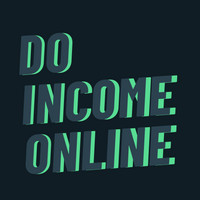
Key Takeaways
-
Secure online payment platforms use encryption, tokenization, and fraud detection to protect transactions.
-
Popular platforms like PayPal, Stripe, and Square each offer unique security features tailored to different needs.
-
Two-factor authentication and PCI-DSS compliance are crucial for enhancing payment security.
-
Users play a significant role in maintaining security by keeping their payment details confidential and monitoring account activities.
-
Regular updates and security audits are essential for businesses to safeguard their e-commerce operations.
Ensuring the Safety of Your Digital Wallet
Our digital wallets carry more than just virtual currency; they hold our financial identities. It’s crucial to treat them with the same care as we would a physical wallet—if not more. That means being selective about where and how we use them. Just as you wouldn’t flaunt your cash in a crowded marketplace, you shouldn’t be lax with your digital transactions.
The Rise of Online Payment Platforms
As the internet has woven itself into the fabric of daily life, online payment platforms have surged in popularity. They’ve become the go-to for everything from buying groceries to paying bills. This convenience, however, comes with risks. Cyber threats lurk around every corner, and a single vulnerability can lead to significant losses. Therefore, it’s critical to understand what makes a payment platform secure.
Common Vulnerabilities in Digital Transactions
Let’s break it down. Most security breaches happen because of a few common vulnerabilities:
-
Weak Authentication: If it’s easy for you to access your account, it might be easy for someone else, too.
-
Outdated Software: Just like old locks on a door, outdated security software can be easy to pick for a seasoned hacker.
-
Phishing Scams: Sometimes the risk isn’t in the system, but in trickery that convinces you to hand over your details.
Being aware of these weak spots can help you stay vigilant and take the necessary steps to bolster your defenses.
Spotlight on Secure Payment Platforms
Let’s shine a light on some of the most trusted payment platforms out there. Each one has its own set of armor to keep your transactions safe.

PayPal’s Proven Security Framework
PayPal has been a leader in the online payment space for years. It’s built a reputation for security with features like:
-
End-to-end encryption, scrambling data to make it unreadable to intruders.
-
Fraud monitoring, which keeps an eye on your transactions 24/7 to catch suspicious activity.
-
Buyer protection, offering refunds for purchases that don’t go as planned.
Stripe’s Encryption and Compliance Standards
Stripe is a favorite among developers and businesses for its robust security measures. They prioritize keeping customer data safe with:
-
Advanced encryption standards that protect data at rest and in transit.
-
Strict adherence to PCI-DSS guidelines, ensuring all card information is handled securely.
-
Machine learning algorithms that detect and prevent fraudulent transactions.
Shopify Payments’ Integrated Risk Management
For e-commerce businesses, Shopify Payments offers a seamless experience with security baked right in. They take care of:
-
Automated fraud analysis, flagging orders that might need a second look.
-
PCI-DSS compliance, so you don’t have to worry about the nitty-gritty of payment card standards.
-
A chargeback recovery system to help you contest fraudulent chargebacks.
Square’s Real-Time Fraud Monitoring
Square is not just a point-of-sale system; it’s a comprehensive payment solution with a keen eye for security:
-
Encryption from the moment the card is swiped, keeping payment details secure.
-
Account takeover protection, preventing unauthorized access to your account.
-
Dispute management tools to help you navigate the chargeback process.
For example, imagine you’re selling handmade jewelry online. A customer purchases a necklace using a payment platform with real-time fraud monitoring. The system notices the buyer’s address doesn’t match the location of their IP address—a potential red flag. The transaction is held for review, and it turns out to be an attempt at fraud. Your revenue and product are safe, thanks to the vigilance of your chosen payment platform.
Remember, the right platform for you will depend on your specific needs—be it global reach, low fees, or particular integrations. It’s about finding the best fit for your digital wallet.
Understanding Encryption and Tokenization
Encryption is like a secret code that only the sender and receiver can understand. When you use a payment platform, encryption jumbles up your payment information into a code that’s nearly impossible for hackers to crack. But it doesn’t stop there. Tokenization takes your sensitive data—like your credit card number—and replaces it with a unique string of characters. This ‘token’ is what gets passed around the internet, not your real details. So even if a hacker gets their hands on it, it’s useless to them.
Here’s what you need to remember about these two tech superheroes: they are not just characters from a story, but can be seen as top skills for online entrepreneurs.
-
Encryption keeps your data hidden from prying eyes as it travels from point A to point B.
-
Tokenization ensures that even if someone intercepts your data, they can’t do anything with it.
Implementing Two-Factor Authentication
Two-factor authentication (2FA) is like having a double lock on your door. It adds an extra step to your login process, usually by sending a code to your phone or email that you have to enter along with your password. It’s a simple way to add a huge boost to your account security. So, if a platform offers 2FA, always turn it on. It’s a small effort for a big increase in safety.
Business Owner’s Guide to Secure E-commerce
If you’re running an online store, you’ve got to be the guardian of your customers’ trust. That means making sure every transaction on your site is as secure as a vault. Here’s how:
The Role of PCI-DSS in Payment Security
PCI-DSS stands for Payment Card Industry Data Security Standard. It’s a set of rules designed to make sure all companies that handle credit card information keep it safe. To stay compliant, you need to:
-
Protect cardholder data with firewalls and encryption.
-
Maintain a secure network to prevent unauthorized access.
-
Regularly test and monitor your systems for vulnerabilities.
It might sound technical, but it’s all about building a fortress around your customer’s information.
Choosing the Right Gateway for Your Platform
Not all payment gateways are created equal. You need to pick one that fits your business like a glove. Consider the importance of secure transaction platforms when choosing.
-
Fees: Look for transparent pricing with no hidden costs.
-
Payment Methods: Make sure it supports the ways your customers want to pay.
-
Integration: It should play nice with your website and shopping cart software.
Regular Security Audits and Updates
Security isn’t a one-and-done deal. Hackers never stop evolving their tactics, so neither should you. Regular security audits help you find any weak spots before the bad guys do. And keeping your software up to date means you have the latest defenses in place. Think of it as a regular check-up for your online store’s health.
Take the story of a small business owner who learned the hard way. She ignored the update notifications for her payment system, thinking they weren’t that important. Then, one day, her site was compromised, and several customers’ credit card details were stolen. It was a tough lesson that staying up-to-date is not just about having the latest features; it’s about security.
The User’s Role in Payment Security
Even with all these security measures, there’s still a crucial role for you to play. After all, the most sophisticated security system can’t protect you if you leave the door wide open.
Keeping Your Payment Details Confidential
It’s simple: your payment details are for your eyes only. Don’t share them over the phone, email, or text, and definitely don’t write them down where others might find them. And when you’re entering them online, make sure the website’s address starts with ‘https://’—that ‘s’ stands for ‘secure’.
-
Never save your card information on shared or public computers.
-
Be wary of unsolicited requests for your payment details.
-
Use payment methods that offer additional layers of security, like one-time use virtual cards.
By keeping your payment details under lock and key, you’re taking a powerful step in protecting yourself from fraud.
Monitoring Account Activities and Reporting Suspicious Actions
Keep a close eye on your bank statements and payment platform accounts. If something looks off, report it immediately. Quick action can be the difference between a minor hiccup and a full-blown financial disaster. Most platforms have easy-to-use reporting tools—don’t be shy about using them. Your vigilance is a critical defense against fraud.
Stay safe out there, and remember, securing your online transactions is a team sport. It takes both powerful platforms and smart habits to keep your digital wallet secure.
Final Statement
As we navigate the digital age, the importance of secure online payment platforms cannot be overstated. They are the backbone of e-commerce and the guardians of our financial well-being. By choosing the right platforms, employing the best practices, and staying vigilant, we can all contribute to a safer online transaction environment. It’s not just a concern for individuals or businesses—it’s a collective responsibility. The integrity of our digital economy depends on it.
Why Safeguarding Payment Platforms is Everyone’s Business
Every stakeholder in the digital payment process plays a pivotal role in maintaining security. From the platforms that process our transactions to the users who initiate them, each link in the chain must be strong. It’s a shared mission to thwart cyber threats and protect sensitive data. By doing so, we foster trust in online commerce, encourage innovation, and support the growth of a thriving digital marketplace.
Frequently Asked Questions (FAQ)
What Makes a Payment Platform ‘Secure’?
A secure payment platform employs a multi-layered approach to protect transactions. This includes using strong encryption to safeguard data, adhering to PCI-DSS standards, implementing fraud detection systems, and offering customer verification methods like two-factor authentication. Additionally, it should have a responsive customer support team ready to address any security concerns.
How Can I Verify the Security of an Online Payment Gateway?
To verify the security of a payment gateway, look for indications of encryption such as SSL certificates—denoted by ‘https://’ in the web address. Check for compliance badges or statements regarding PCI-DSS. It’s also wise to research the platform’s reputation, read user reviews, and investigate its history with data breaches or security incidents.
What Should I Do if I Suspect a Breach in My Payment Platform?
If you suspect a breach in your payment platform, immediately notify the service provider. Change your passwords and monitor your account for any unauthorized transactions. If you find any, report them as soon as possible. It’s also advisable to contact your bank to discuss additional protective measures, such as freezing your cards or setting up transaction alerts.
Can I Use Multiple Payment Platforms Safely?
Yes, you can use multiple payment platforms safely, but it requires diligence. Ensure each platform adheres to high-security standards and avoid using the same passwords across different services. Regularly update your security settings and monitor each account for unusual activity. Diversifying your payment methods can also be a strategic move to mitigate risk.




Leave a Reply